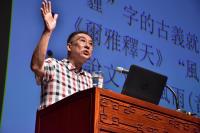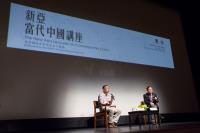
|
|








|






|
| Professor Wu Dui chaired the New Asia Lectures on Contemporary China 2018/19 (First Lecture) | |
|
Permanently endowed by the Dato' Wong Kwing-keung Fund, the First Lecture of "New Asia Lectures on Contemporary China 2018/19" was held in Sir Run Run Shaw Hall, CUHK, on 12 October. Professor Wu Dui of the Institute of Mass Spectrometer and Atmospheric Environment of Jinan University was invited to give a talk on "Recent Hot Topics of PM2.5 and the Long-Term Variations of Hazy Weather in China". Professor Wu shared his analysis on the current trend of hazy weather in China and presented his viewpoints and observations through comparing the conditions of different countries. This lecture was hosted by Professor Yao Xiaoqiang of the CUHK School of Biomedical Sciences. Professor Wu had long been studying atmospheric physical chemistry and atmospheric environment, and was an expert researcher in the fields of hazardous dense fog, hazy weather and PM2.5. He began the lecture by pointing out that "fog" and "haze" were entirely different concepts, and suggested that the audience describe atmospheric pollution with the term "haze" instead of "fog-haze". He explained that hazy weather was caused by aerosol fine particles PM2.5 pollution, which was aggravated day by day by human activities resulted from the expansion of urban areas and the acceleration of urbanisation, and which lowered visibility and brought about haze. There were different measures against haze around the world. Although China started later than other countries in such work, Professor Wu thought that the Pearl River Delta region in China had achieved remarkable results in coping with hazy weather in the past decade, while preliminary achievements in emission reduction were seen in the Beijing-Tianjin-Hebei cluster and the Yangtze River Delta. He remarked, however, that as ozone and particle aerosols showed an inverse correlation, care had to be taken when formulating plans to tackle hazy weather so as not to create ozone problems, which were even more difficult to handle. |
|
Copyright 2025. New Asia College, The Chinese University of Hong Kong. All Rights Reserved.
This E-Newsletter is solely owned by New Asia College. The College accepts no liability for any loss or damage howsoever arising from
any use or misuse or reliance on any information in this E-Newsletter.












